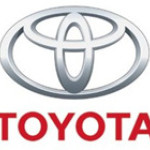- Industry: Automotive
- Number of terms: 3540
- Number of blossaries: 0
- Company Profile:
This third brake light helps drivers in other vehicles recognise more quickly that the brakes have been applied.
Industry:Automotive
A vehicle air conditioning system that uses R-134a refrigerant instead of CFC-based chemicals (usually known as Freon).
Industry:Automotive
The vehicle’s frame with all the operating parts, including the engine, drivetrain, suspension and brakes (but excluding the body, accessories and trim).
Industry:Automotive
This system helps to safely meet the needs of family use. CRS top tether and lower ISO-FIX anchors have been fitted to the rear seats and floor to allow proper installation of a child safety seat independent of the seatbelt system. CRS markings are located on buttons at the base of the seatback. Never place a child seat in the front passenger seat. Place children securely in the rear seat. For more information on airbags and child seat usage, see the Owner’s Manual.
Industry:Automotive
The number used to indicate the aerodynamic drag force on a vehicle (a function of exterior styling and the airflow in and around the vehicle). The higher the number, the greater the drag force a vehicle’s engine must overcome at any road speed.
Industry:Automotive
The pillar that supports the back window or the rear portion of the vehicle’s roof.
Industry:Automotive
4 door cab with choice of 6 passenger (front bench seat) or 5 passenger (captain chairs) and 4 full-opening front-hinged doors and fully retractable rear windows and slide/recline 60/40 rear seats.
Industry:Automotive
The daytime running light system activates the low beam headlights at a reduced intensity during daylight to keep the car highly visible to other vehicles. On some models, a dash-mounted sensor automatically switches between DRLs and the normal intensity low beams according to the lighting conditions (nighttime, tunnel, etc.). (Note: The DRL system activates either low beams or high beams - it varies by model.)
Industry:Automotive
An engine configuration with two overhead camshafts per row of cylinders. One camshaft operates the intake valves and the other operates the exhaust valves. This is the usual arrangement in engines with multi-valve cylinder heads. Compared to single overhead cam designs, the direct drive used in all Toyota DOHC engines requires fewer moving parts. It eliminates the rocker arm needed to activate the valves, thus improving efficiency and reducing vibration and noise. Compared to push-rod overhead valve (OHV) engines, which use an arrangement by which the camshaft is located in the engine block and opens the valves via long push rods and rocker arms, it eliminates the need for both of these components. With fewer moving parts, there is less inertia. So, an overhead cam engine can run at a higher speed and produce more power than a comparably sized pushrod engine.
Industry:Automotive
On a steep, off-road downhill slope, low-range 4-wheel drive may not be enough to reduce speed. DAC will automatically apply the brakes to keep the vehicle's speed low without locking the wheels.
Industry:Automotive
